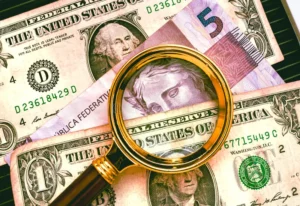The US dollar recently saw a decrease against the Brazilian real, reflecting trends in global markets.
This change aligns with an adjustment period following the dollar’s recent rise. Changes in expectations about the Federal Reserve’s interest rate decisions primarily drive this movement.
As of 10:18 AM Brasília time, the spot dollar experienced a 0.09% drop, trading at 4.9260 reais.
Similarly, at the Brazilian stock exchange B3, the primary futures contract fell by 0.23%, reaching 4.9345 reais.
Market analysts observed a shift in anticipation this week. Participants are now less convinced about the US slashing interest rates in March.
Instead, they increasingly expect stability, although a rate cut remains the predominant prediction.

This sentiment change results from firm statements by officials at the Federal Reserve and the European Central Bank.
Federal Reserve Director Christopher Waller’s remarks had a notable impact.
He advocated for a cautious approach to reducing the base interest rate. He emphasized waiting until a consistent decline in inflation is clear.
Due to reduced optimism about relaxed monetary policies, the dollar index against major currencies reached a five-week high. This development places pressure on various global currencies.
Market Expectations and Currency Dynamics
Analyst Leonel Mattos from StoneX indicates that the reassessment of market expectations might be slowing down.
The market has adjusted its positions, and today’s session will reveal whether more adjustments are possible or if currency movements will stabilize.
Following substantial shifts in the dollar’s value, it’s common to see a corrective phase or stability as investors secure profits.
Over the week, the US dollar has increased by approximately 1.5% against the real, with a 1.6% rise in January up to the previous day’s close.
International factors largely drive this trend, particularly the likelihood of delayed monetary easing in the US, affecting the real’s relative appeal.
The interest rate differential between Brazil and the US is crucial. The smaller the gap, the less attractive it becomes for “carry trade” strategies.
These strategies involve borrowing at low rates in one country and investing in a higher-yield, riskier market.

